Experimental Characterisation and Field Experience of a Reusable, Modified Polyurethane Foam for the Mechanical Clean-Up of Oil Spills on the Sea Surface
Abstract
:1. Introduction
2. Materials and Method
2.1. Properties of the Reusable Modified Polyurethane Sponge
2.2. Properties of the Liquids
2.3. Experimental Setup
2.4. Measurement Procedure
3. Experimental Results and Discussion
3.1. Oil Recovery with Increasing Squeezing Pressure
3.2. Recovery Rate of Different Oil Types and Reusability of Foam
3.3. Investigations with Crude Oil and Artificial Sea Water
4. Field Experience with the RMPUF in Real Oil Spill Response Conditions
4.1. Field Trial in Gran Tarjal (Fuerteventura, Spain)
4.2. Barriers
5. Conclusions
Author Contributions
Funding
Data Availability Statement
Acknowledgments
Conflicts of Interest
Abbreviations
| ASTM | American Society for Testing and Materials |
| ASW | Artificial Seawater |
| DWH | Deepwater Horizon |
| HFW | Horizontal Field Width |
| ITOPF | International Tanker Owners’ Pollution Federation |
| RMPUF | Reusable Modified Polyurethane Foam |
References
- Focus of Energy Transition Council (ETC). 2021. Available online: https://ukcop26.org/focus-of-energy-transition-council-etc/ (accessed on 16 November 2021).
- Muehlenbachs, L.; Cohen, M.A.; Gerarden, T. The Impact of Water Depth on Safety and Environmental Performance in Offshore Oil and Gas Production. Energy Policy 2013, 55, 699–705. [Google Scholar] [CrossRef]
- Eklund, R.L.; Knapp, L.C.; Sandifer, P.A.; Colwell, R.C. Oil Spills and Human Health: Contributions of the Gulf of Mexico Research Initiative. GeoHealth 2019, 3, 391–406. [Google Scholar] [CrossRef]
- McNutt, M.K.; Camilli, R.; Crone, T.J.; Guthrie, G.D.; Hsieh, P.A.; Ryerson, T.B.; Savas, O.; Shaffer, F. Review of Flow Rate Estimates of the Deepwater Horizon Oil Spill. Proc. Natl. Acad. Sci. USA 2012, 109, 20260–20267. [Google Scholar] [CrossRef] [PubMed]
- Tao, Z.; Bullard, S.; Arias, C. High Numbers of Vibrio Vulnificus in Tar Balls Collected from Oiled Areas of the North-Central Gulf of Mexico Following the 2010 BP Deepwater Horizon Oil Spill. EcoHealth 2011, 8, 507–511. [Google Scholar] [CrossRef] [PubMed]
- US Coast Guard. On Scene Coordinator Report Deep Water Horizon Oil Spill; Technical Report; United States Coast Guard: Washington, DC, USA, 2011. [Google Scholar]
- Beyer, J.; Trannum, H.C.; Bakke, T.; Hodson, P.V.; Collier, T.K. Environmental Effects of the Deepwater Horizon Oil Spill: A Review. Mar. Pollut. Bull. 2016, 110, 28–51. [Google Scholar] [CrossRef] [PubMed]
- Sackeyfio, N. Oil Tanker Spill Statistics 2020; Technical Report; International Tanker Owners Pollution Federation (ITOPF Ltd.): London, UK, 2021. [Google Scholar]
- Chow, D. How We Clean Oil Spills Hasn’t Changed in Decades. These Scientists Want to Change That. NBC News, 7 October 2021. [Google Scholar]
- Douglas, D.; Stelloh, T. Oil Spill off California Coast Closes Pipeline, Prompts Warnings of Ecological Disaster. NBC News, 3 October 2021. [Google Scholar]
- Brussaard, C.; Peperzak, L.; Beggah, S.; Wick, L.; Wuerz, B.; Weber, J.; Samuel Arey, J.; Van Der Burg, B.; Jonas, A.; Huisman, J.; et al. Immediate Ecotoxicological Effects of Short-Lived Oil Spills on Marine Biota. Nat. Commun. 2016, 7. [Google Scholar] [CrossRef] [PubMed]
- Ivshina, I.B.; Kuyukina, M.S.; Krivoruchko, A.V.; Elkin, A.A.; Makarov, S.O.; Cunningham, C.J.; Peshkur, T.A.; Atlas, R.M.; Philp, J.C. Oil Spill Problems and Sustainable Response Strategies through New Technologies. Environ. Sci. Process. Impacts 2015, 17, 1201–1219. [Google Scholar] [CrossRef] [PubMed]
- ITOPF. Technical Information Paper 03: Use of Booms in Oil Pollution Response; Technical Information Paper 03; ITOPF: London, UK, 2011. [Google Scholar]
- International Tanker Owners Pollution Federation (ITOPF Ltd.). Technical Information Paper 08: Use of Sorbent Materials in Oil Spill Response; Technical Information Paper 08; ITOPF: London, UK, 2012. [Google Scholar]
- Dhaka, A.; Chattopadhyay, P. A Review on Physical Remediation Techniques for Treatment of Marine Oil Spills. J. Environ. Manag. 2021, 288, 112428. [Google Scholar] [CrossRef] [PubMed]
- Al-Jammal, N.; Juzsakova, T. Review on the Effectiveness of Adsorbent Materials in Oil Spills Clean Up. Desalination 2016, 8. Available online: https://www.researchgate.net/publication/319254182_Review_on_the_Effectiveness_of_Adsorbent_Materials_in_Oil_Spills_Clean_Up (accessed on 1 January 2020).
- Hadji, E.M.; Fu, B.; Abebe, A.; Bilal, H.M.; Wang, J. Sponge-Based Materials for Oil Spill Cleanups: A Review. Front. Chem. Sci. Eng. 2020, 14, 749–762. [Google Scholar] [CrossRef]
- Kukkar, D.; Rani, A.; Kumar, V.; Younis, S.A.; Zhang, M.; Lee, S.S.; Tsang, D.C.; Kim, K.H. Recent Advances in Carbon Nanotube Sponge–Based Sorption Technologies for Mitigation of Marine Oil Spills. J. Coll. Interface Sci. 2020, 570, 411–422. [Google Scholar] [CrossRef] [PubMed]
- Oliveira, L.M.; Saleem, J.; Bazargan, A.; Duarte, J.L.d.S.; McKay, G.; Meili, L. Sorption as a Rapidly Response for Oil Spill Accidents: A Material and Mechanistic Approach. J. Hazard. Mater. 2021, 407, 124842. [Google Scholar] [CrossRef] [PubMed]
- Zamparas, M.; Tzivras, D.; Dracopoulos, V.; Ioannides, T. Application of Sorbents for Oil Spill Cleanup Focusing on Natural-Based Modified Materials: A Review. Molecules 2020, 25, 4522. [Google Scholar] [CrossRef] [PubMed]
- ASTM International. Standard Test Method for Sorbent Performance of Adsorbents for Use on Crude Oil and Related Spills; Test Method F726-17; ASTM International: West Conshohocken, PA, USA, 2017. [Google Scholar]
- Peng, L.; Yuan, S.; Yan, G.; Yu, P.; Luo, Y. Hydrophobic Sponge for Spilled Oil Absorption. J. Appl. Polym. Sci. 2014, 131. [Google Scholar] [CrossRef]
- Pesch, S.; Schulz, S.; Aboud, N.; Schlüter, M. Experimental Investigation of Pure and Gas-Saturated Crude Oil Viscosity and Density from 268 to 308 K and Up to 23 MPa. J. Chem. Eng. Data 2021, 66, 2355–2365. [Google Scholar] [CrossRef]
- Pesch, S.; Knopf, R.; Radmehr, A.; Paris, C.B.; Aman, Z.M.; Hoffmann, M.; Schlüter, M. Experimental Investigation, Scale-Up, and Modeling of Droplet Size Distributions in Turbulent Multiphase Jets. Multiph. Sci. Technol. 2020, 32, 113–136. [Google Scholar] [CrossRef]
- Jones, R.F.; Speer, H.L.; Kury, W. Studies on the Growth of the Red Alga Porphyridium Cruentum. Physiol. Plant. 1963, 16, 636–643. [Google Scholar] [CrossRef]
- Nguyen, P.Q.P.; Hoang, A.; Al Tawaha, A.R. A Study of Oil Absorbing Capacity of Cellulose-implemented Polyurethane for the Recovery of Oil Spills. Int. J. e-Navig. Marit. Econ. 2018, 9, 25–34. [Google Scholar]
- Barry, E.; Libera, J.A.; Mane, A.U.; Avila, J.R.; DeVitis, D.; Van Dyke, K.; Elam, J.W.; Darling, S.B. Mitigating Oil Spills in the Water Column. Environ. Sci. Water Res. Technol. 2018, 4, 40–47. [Google Scholar] [CrossRef]
- Zhou, X.; Zhang, Z.; Xu, X.; Men, X.; Zhu, X. Facile Fabrication of Superhydrophobic Sponge with Selective Absorption and Collection of Oil from Water. Ind. Eng. Chem. Res. 2013, 52, 9411–9416. [Google Scholar] [CrossRef]
- Barry, E.; Mane, A.U.; Libera, J.A.; Elam, J.W.; Darling, S.B. Advanced Oil Sorbents Using Sequential Infiltration Synthesis. J. Mater. Chem. A 2017, 5, 2929–2935. [Google Scholar] [CrossRef]
- Wilson, M.; Bailey, D.; Maung-Douglass, E.; Partyka, M.; Skelton, T.; Swann, L. Deepwater Horizon: Where Did It Go? GOMSG-G-21-013. 2021. Available online: https://masgc.org/ (accessed on 1 January 2020).
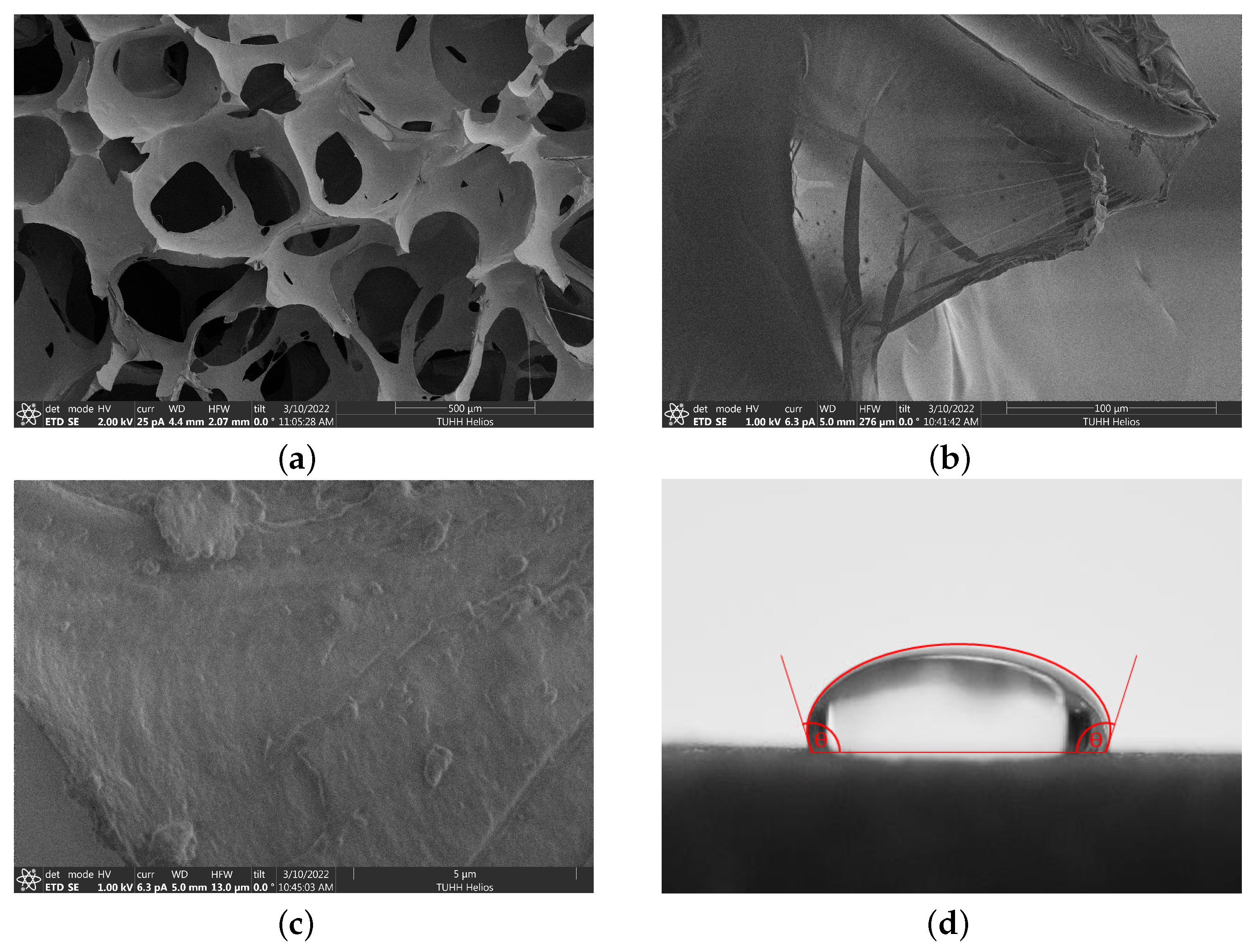
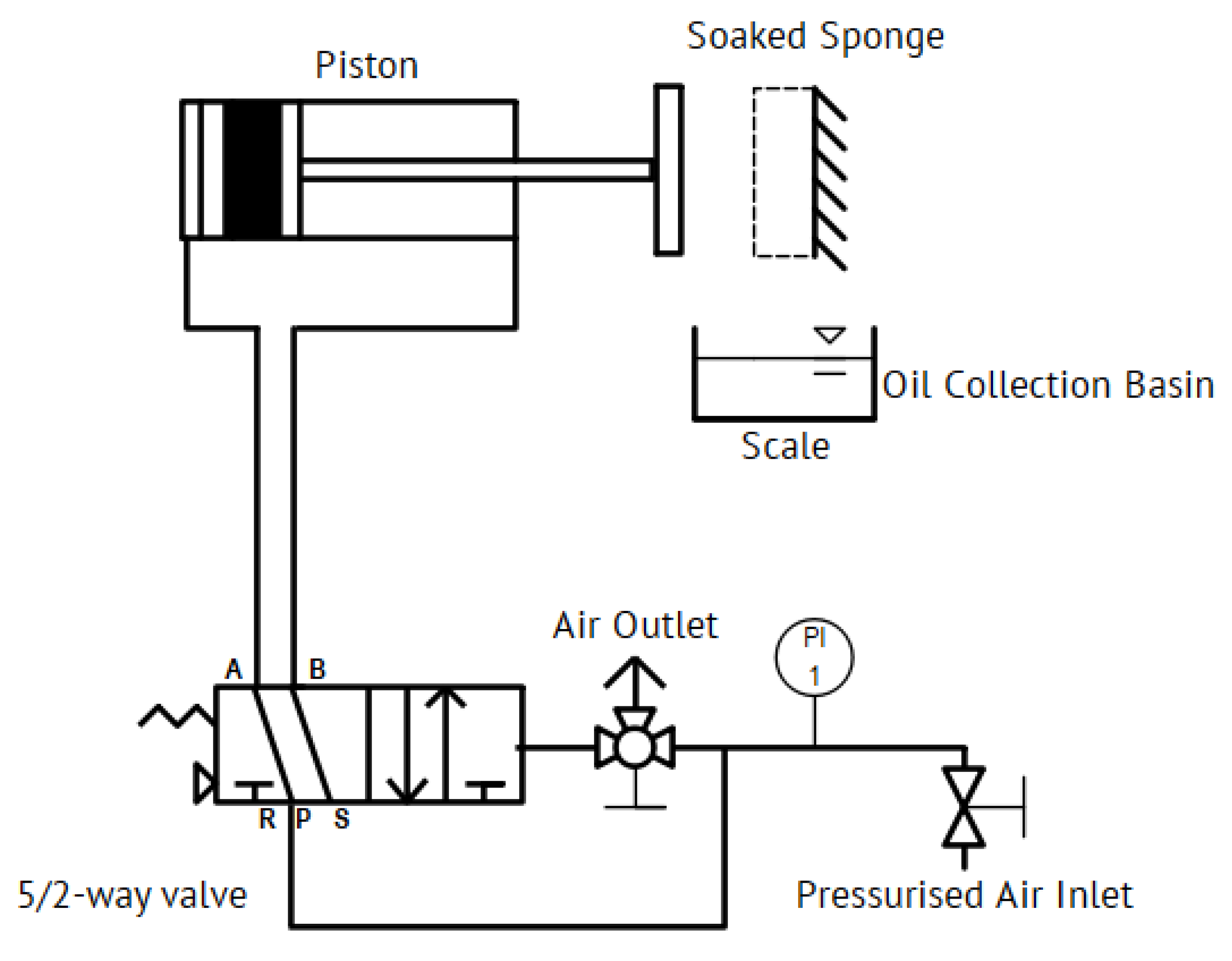
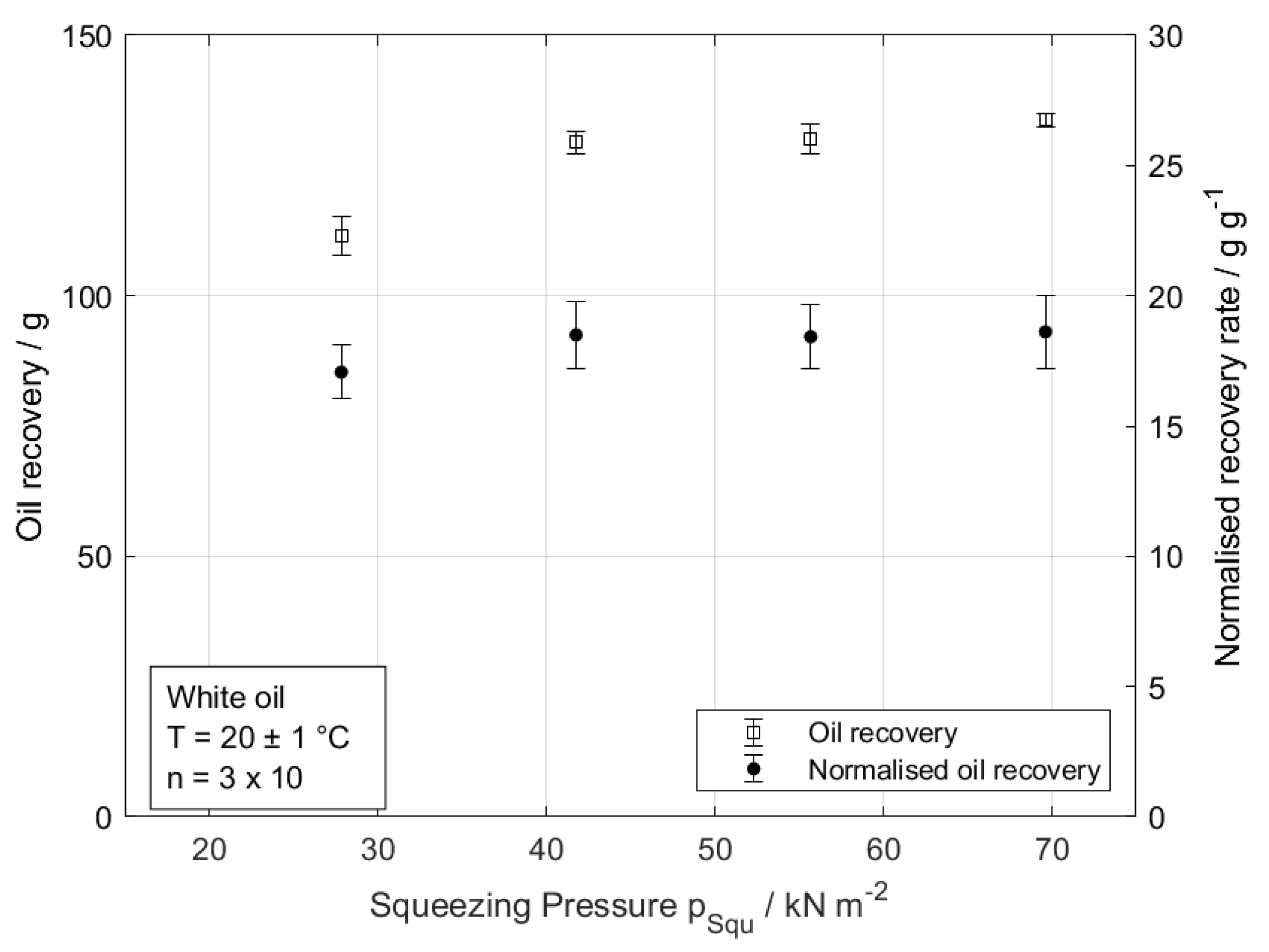

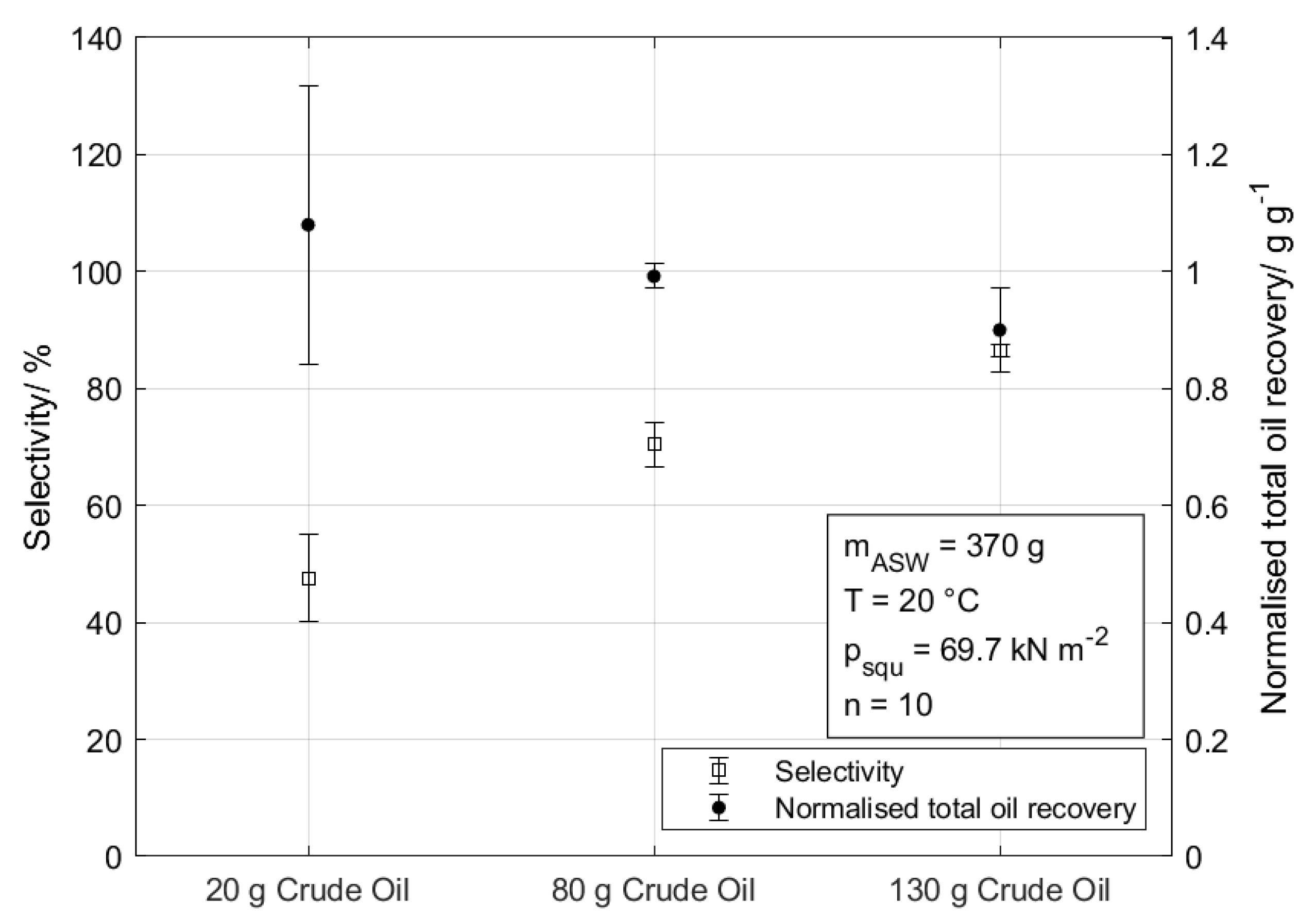
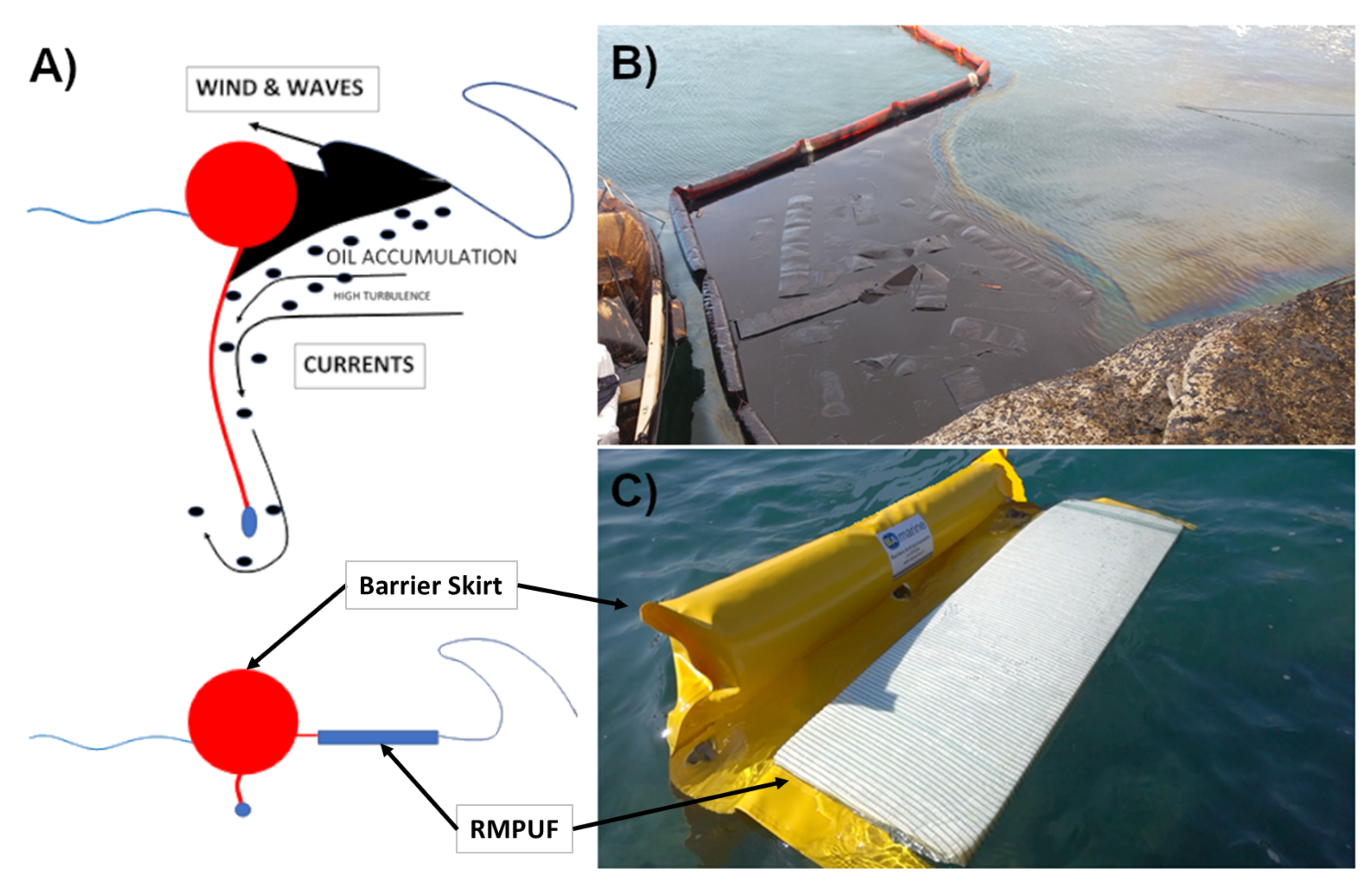
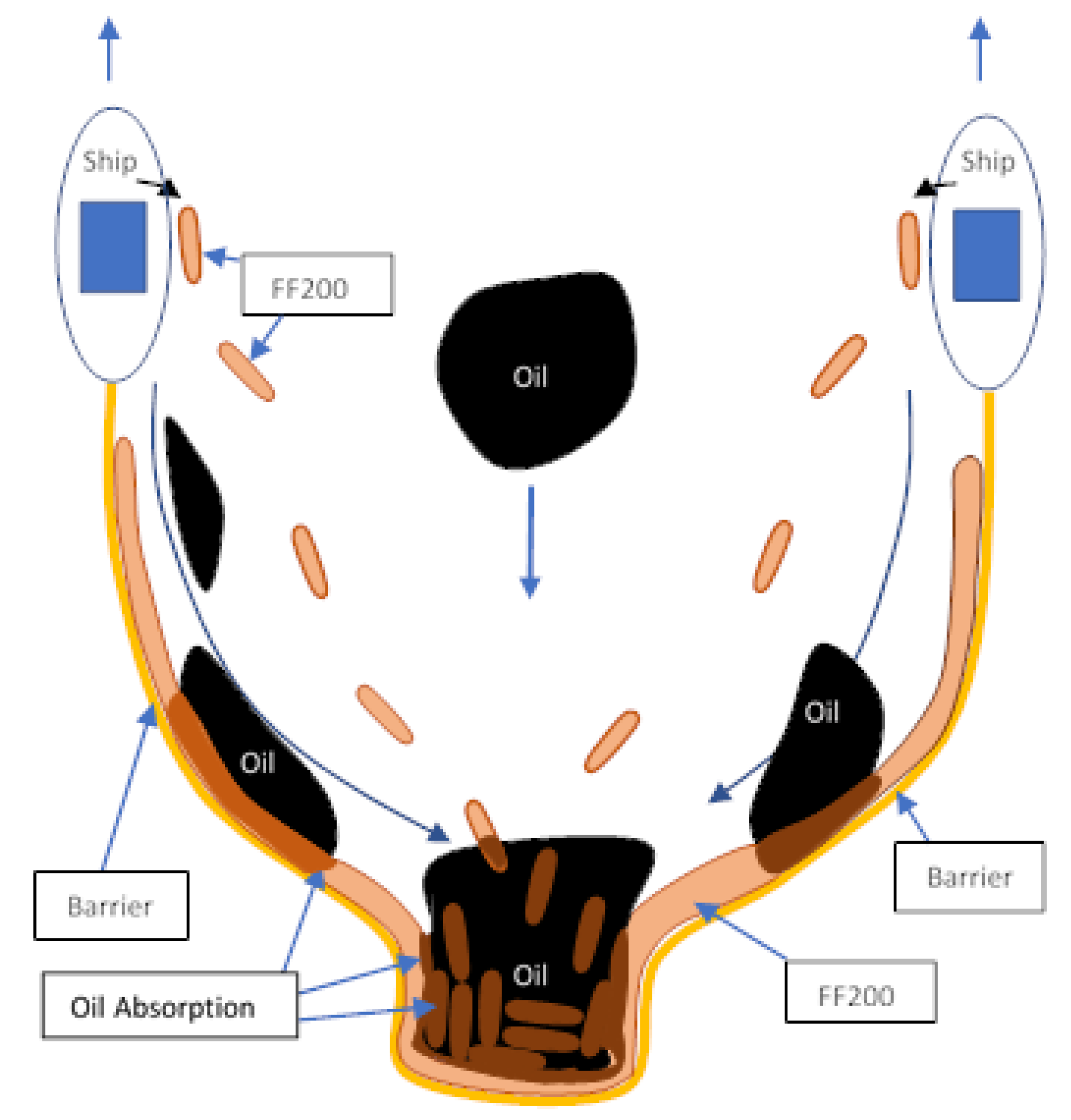
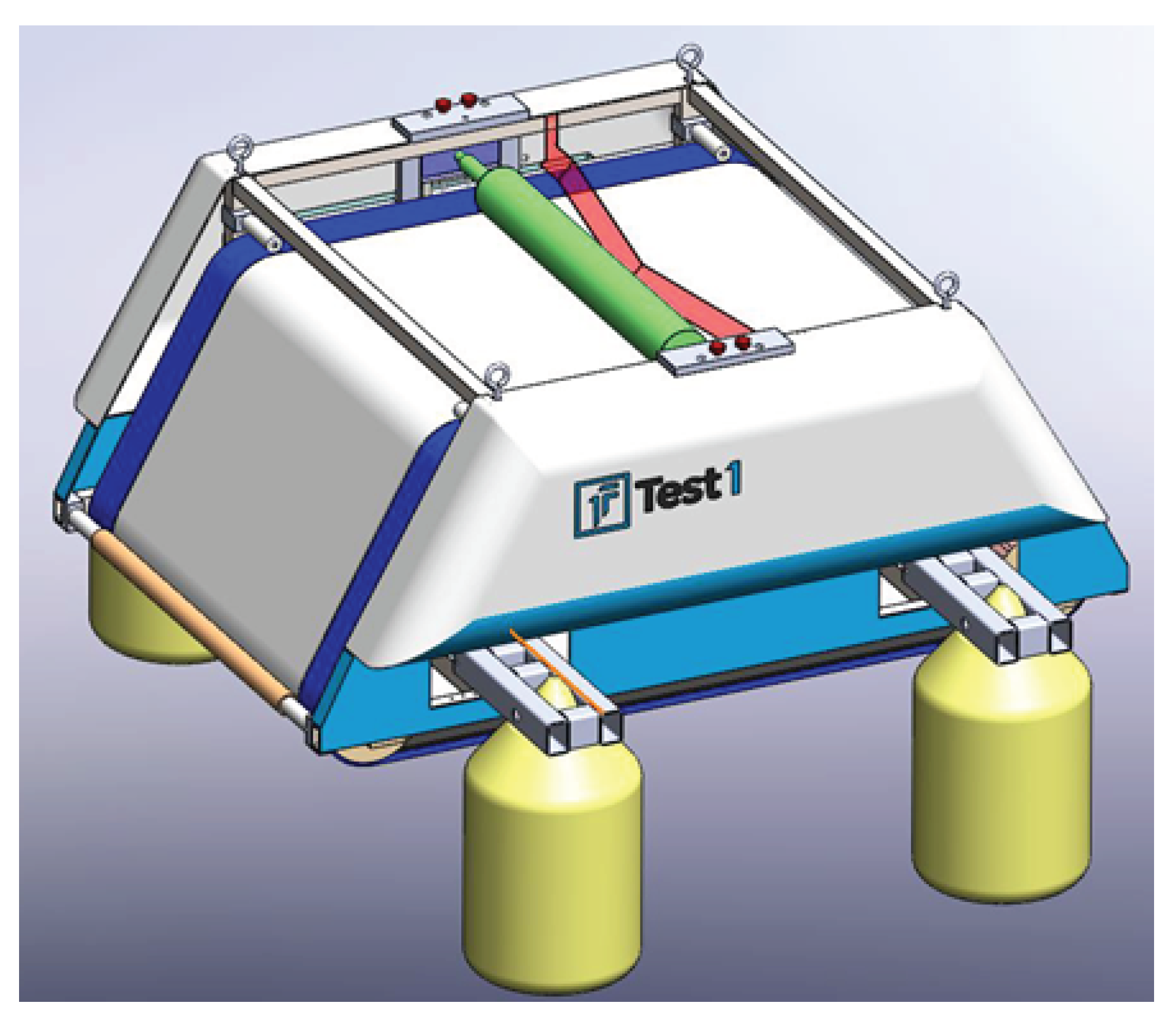
| Oil Type | Dynamic Viscosity /Pa·s | Surface Tension /N·m−1 |
|---|---|---|
| Sunflower Oil | 5.9 × 10−3 | 32.9 × 10−3 |
| White Oil | 4.8 × 10−3 | 21.1 × 10−3 |
| Crude Oil | 38.8 × 10−3 | 26.2 × 10−3 |
| Component | Concentration c/g·L−1 |
|---|---|
| NaCl | 27.0 |
| MgSO4·7H2O | 6.6 |
| MgCl2·6H2O | 5.6 |
| CaCl2·2H2O | 1.5 |
| KNO3 | 1.0 |
Publisher’s Note: MDPI stays neutral with regard to jurisdictional claims in published maps and institutional affiliations. |
© 2022 by the authors. Licensee MDPI, Basel, Switzerland. This article is an open access article distributed under the terms and conditions of the Creative Commons Attribution (CC BY) license (https://creativecommons.org/licenses/by/4.0/).
Share and Cite
Niehaus, D.; Hofmann, S.; Kumar, S.B.; Hoffmann, M.; Cisneros-Aguirre, J.; Schlüter, M. Experimental Characterisation and Field Experience of a Reusable, Modified Polyurethane Foam for the Mechanical Clean-Up of Oil Spills on the Sea Surface. J. Mar. Sci. Eng. 2022, 10, 1369. https://doi.org/10.3390/jmse10101369
Niehaus D, Hofmann S, Kumar SB, Hoffmann M, Cisneros-Aguirre J, Schlüter M. Experimental Characterisation and Field Experience of a Reusable, Modified Polyurethane Foam for the Mechanical Clean-Up of Oil Spills on the Sea Surface. Journal of Marine Science and Engineering. 2022; 10(10):1369. https://doi.org/10.3390/jmse10101369
Chicago/Turabian StyleNiehaus, Daniel, Sebastian Hofmann, Srividya Bairamangala Kumar, Marko Hoffmann, Jesús Cisneros-Aguirre, and Michael Schlüter. 2022. "Experimental Characterisation and Field Experience of a Reusable, Modified Polyurethane Foam for the Mechanical Clean-Up of Oil Spills on the Sea Surface" Journal of Marine Science and Engineering 10, no. 10: 1369. https://doi.org/10.3390/jmse10101369
APA StyleNiehaus, D., Hofmann, S., Kumar, S. B., Hoffmann, M., Cisneros-Aguirre, J., & Schlüter, M. (2022). Experimental Characterisation and Field Experience of a Reusable, Modified Polyurethane Foam for the Mechanical Clean-Up of Oil Spills on the Sea Surface. Journal of Marine Science and Engineering, 10(10), 1369. https://doi.org/10.3390/jmse10101369









